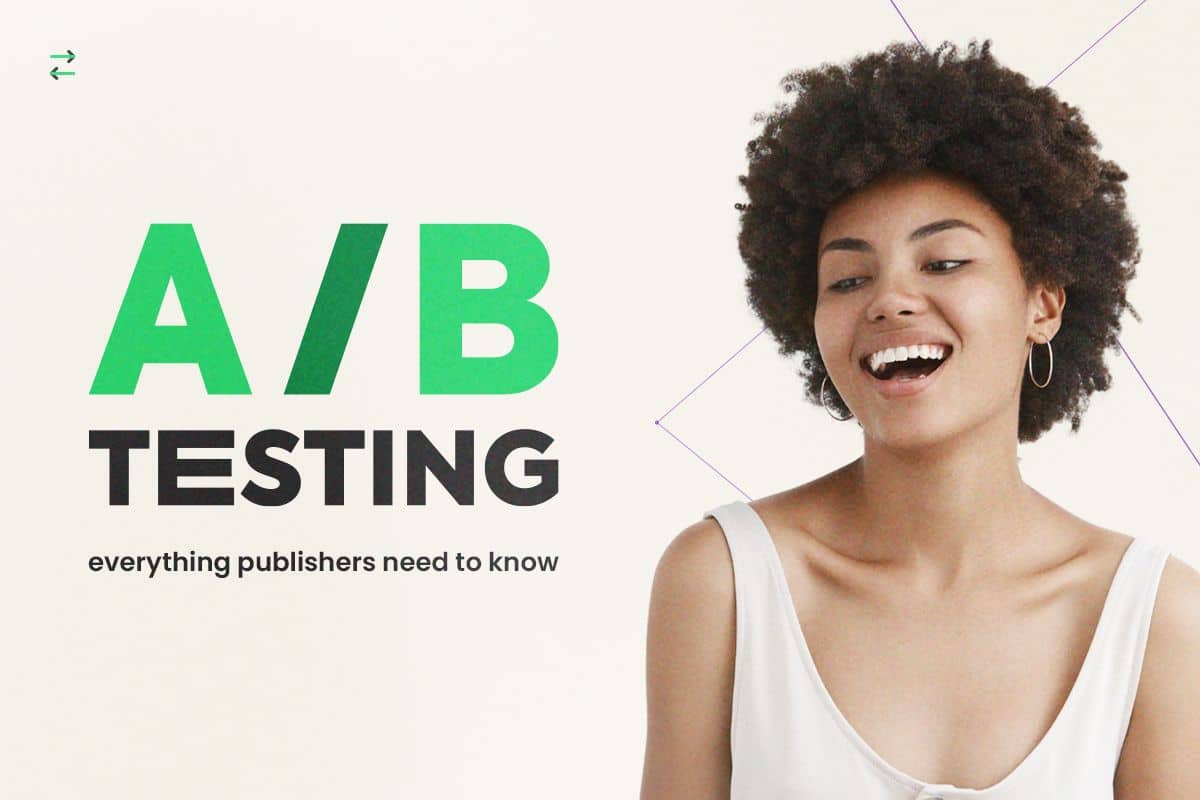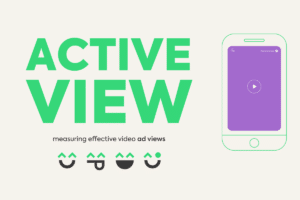Welcome to our blog, where we delve into the world of A/B testing – a powerful technique for optimizing your website or app. Whether you’re a seasoned publisher or just starting out, understanding A/B testing can supercharge your digital strategies. In this comprehensive guide, we’ll walk you through the essentials, share valuable insights from our expert team, and explore how split testing.
Index
- 1 What is A/B Testing?
- 2 Mastering the A/B Testing Process
- 3 Why A/B Testing Matters
- 4 The Art of A/B Testing: Publisher’s Perspective
- 5 A/B Testing and SEO
- 6 Enhancing User Experience with Ad A/B Testing
- 7 A/B Testing Tools: Unleashing the Potential
- 8 Unlocking the Full Potential: A/B Testing for Ads
- 9 Mastering A/B Testing: Your Path to Success
What is A/B Testing?
A/B testing, also known as split testing, is a method used to compare two versions of a web page or app to determine which one performs better. This technique involves randomly showing users different variants of a page and using statistical analysis to discern which variation yields superior results for a specific conversion goal. By conducting A/B tests, you can gain data-driven insights, discard guesswork, and make informed decisions to optimize user experiences.
Mastering the A/B Testing Process
To embark on a successful A/B testing journey, it’s crucial to grasp the process. It all starts with choosing a web page or app screen to modify. Whether it’s tweaking a headline, altering ad placement, or even revamping the entire layout, these changes serve as variations. Half of your visitors interact with the original version (control), while the other half experience the modified version (variation).
As user engagement data flows in, a statistical mechanism comes into play, enabling you to assess whether the changes had a positive, negative, or neutral impact on user behavior. The goal is to optimize user experiences systematically, transitioning from guesswork to data-backed decisions.
Why A/B Testing Matters
A/B testing empowers publishers to make incremental and informed adjustments to user experiences while collecting crucial data. This methodology allows for hypothesis formulation and a deep understanding of how specific elements influence user behavior. It replaces subjective assumptions with evidence-based conclusions, ensuring that the chosen path yields tangible, positive outcomes.
More than just resolving queries or dispelling uncertainties, split testing serves as an ongoing tool for continuous improvement. Publishers can strive for higher RPM (Revenue Per Mille) or enhanced eCPM (Effective Cost Per Mille) over time. Advertisers, on the other hand, can fine-tune lead quality or campaign landing pages to bolster results. It’s a step-by-step evolution, with each test contributing to an optimized user experience.
The Art of A/B Testing: Publisher’s Perspective
A/B testing isn’t a one-size-fits-all solution; it’s a tailored process. Publishers need to navigate the intricacies while aligning with best practices to achieve meaningful results. Here are six highly relevant tips from our expert team:
1. Start with a Single Variable
Simplicity is key when initiating your split testing journey. Begin with straightforward tests that modify minor elements, such as graphics or buttons. By testing a single variable, you can swiftly implement changes and gather accurate, reliable insights. Multi-variant tests can be complex and prone to errors, making them less suitable for initial stages.
2. Embrace Patience: Allow Time for Insights
Time plays a pivotal role in A/B testing success. Extend the testing period, ideally over a week, to account for day-of-week fluctuations. Avoid premature conclusions that might miss subtle but impactful trends. Statistical significance is the benchmark for evaluating results effectively.
3. Hypothesis-Driven Approach
Crafting clear and testable hypotheses is the backbone of split testing. Well-formulated hypotheses yield valuable insights, whether they confirm or challenge your assumptions. A/B testing not only enhances revenue and conversions but also enhances user understanding, which can be leveraged for targeted segmentation and retention strategies.
4. Step-by-Step Optimization
While parallel A/B tests on different subpages may seem tempting, it’s wiser to test one change at a time. Sequentially optimizing each element ensures a consistent user experience and accurate attribution of results. For more complex changes across multiple pages, multi-page experiments are recommended.
5. Augment with Web Analytics
Integrate A/B test data with web analytics, such as Google Analytics, for richer insights. Unveil nuanced patterns by segmenting your test group, distinguishing between new and returning users. This synergy refines interpretations and drives more tailored strategies.
6. Define Clear Priorities and Goals
Resources are limited, necessitating a clear hierarchy of priorities. Set specific, measurable, attainable, relevant, and time-bound (SMART) goals for each test. This strategic approach optimizes your testing efforts and propels you toward impactful enhancements.
A/B Testing and SEO
For publishers, the interplay between A/B testing and SEO is critical. While split testing is encouraged by Google, certain practices can influence search rankings. Avoid cloaking, ensure proper use of rel=”canonical,” and consider the impact of page variations on site indexing. Additionally, aligning split testing with web analytics can refine your SEO strategies.
Enhancing User Experience with Ad A/B Testing
Monetizing websites without compromising user experience demands a delicate balance. A/B testing empowers publishers to optimize ad placements and formats while keeping the user at the forefront. Here’s how to master the art of ad A/B testing:
1. Choose the Right Ad Types
Strategically place ads to avoid intrusiveness and ensure seamless integration within your content. Strike a balance between revenue generation and user engagement.
2. Prioritize Mobile Optimization
In the era of mobile browsing, ensure that your ad placements and formats are optimized for various devices. A seamless user experience on mobile devices is non-negotiable.
3. Experiment with Ad Display
Test different ad sizes, positions, and formats to understand how they impact viewability and revenue. Thoughtful experimentation can yield insights that optimize your ad strategy.
4. Geo-Targeting and Language Alignment
Customize ads based on geographic location and language to resonate with diverse audiences. Language-appropriate messaging enhances user engagement and conversion rates.
5. Manage Ad Density
Striking the right balance between ad density and user experience is crucial. Test different ad densities to find the optimal mix that maximizes revenue without overwhelming users.
6. Leverage Ad Networks Wisely
Explore various ad networks and evaluate their performance for different ad types. Select networks that align with your revenue goals and enhance the user experience.
A/B Testing Tools: Unleashing the Potential
A/B testing tools streamline the testing process, enhancing efficiency and accuracy. Consider these notable tools for your split testing endeavors:
1. Google Optimize
A versatile and free tool, Google Optimize simplifies A/B testing. Seamlessly integrate it with your Google Analytics account and set up A/B tests with ease.
2. Ad Inserter
Designed for WordPress users, Ad Inserter is an all-in-one plugin for managing ads. It facilitates the insertion of ad codes at specific positions, contributing to a seamless ad A/B testing experience.
Unlocking the Full Potential: A/B Testing for Ads
A/B testing holds immense potential for optimizing ad performance and revenue. By comparing controllable variables like ad types and placements with uncontrollable factors like traffic source, publishers gain insights applicable across all traffic sources, devices, and times.
Mastering A/B Testing: Your Path to Success
As you embark on your A/B testing journey, remember that realistic goals and well-constructed hypotheses pave the way to success. While investing time and effort, the rewards in terms of optimized user experiences are unparalleled. Trust in the expertise of Grumft to guide you on this transformative path.
Incorporating split testing into your publishing strategy can drive substantial improvements, guiding your website or app towards enhanced engagement, revenue, and user satisfaction. As you apply these insights, remember that A/B testing is not just a method—it’s your roadmap to unlocking digital excellence.





